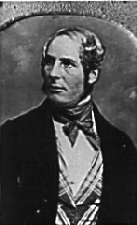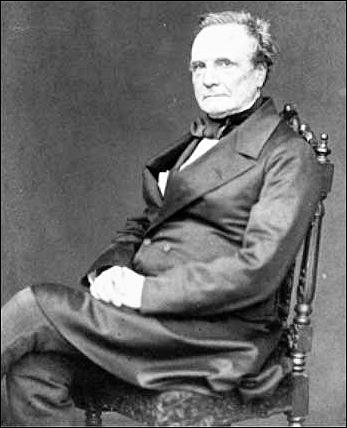While you read this today on your computer, let us ruminate upon the life of Ada Lovelace, who died on this date in 1852.
Ada would have seemed to have been born into a charmed life. She was the only child of a titled lord and a very wealthy mother. Unfortunately for her, her father was the notorious, womanizing homosexual (let your mind rattle that around for a second) and not half bad poet Lord Byron.
She was named after Byron's half-sister, Augusta Leigh, by whom he was rumoured to have fathered a child (oh yeah, I forgot to mention that - he slept with his half sister). It was Augusta who encouraged Byron to marry to avoid scandal, and he reluctantly chose Annabella Milbanke (very wealthy heiress and noted stick-in-the-mud). On January 16, 1816, Annabella left Byron, taking 1-month old Ada with her. On April 21, Byron signed the Deed of Separation and left England for good a few days later. He was never allowed to see either of them again.
Ada lived with her mother, as is apparent in her father's correspondence concerning her. Lady Byron was also highly interested in mathematics (Lord Byron once called her "the princess of parallelograms"), which dominated her life, even after marriage. Her obsession with rooting out any of the insanity of which she accused Lord Byron was one of the reasons why Annabella taught Ada mathematics at an early age. Ada was privately home schooled in mathematics and science by William Frend, William King and Mary Somerville. One of her later tutors was Augustus De Morgan. An active member of London society, she was a member of the Bluestockings in her youth.
In 1835 she married William King, 8th Baron King, later 1st Earl of Lovelace. Her full name and title for most of her married life was The Right Honourable Augusta Ada, Countess of Lovelace. She is widely known in modern times simply as Ada Lovelace, or by her birth name, Ada Byron.
Mary Somerville, one of her tutors, was a noted researcher and scientific author of the 19th century, who introduced her in turn to Charles Babbage on June 5, 1833. Other acquaintances were Sir David Brewster, Charles Wheatstone, Charles Dickens and Michael Faraday. She apparently ran in heady circles for her day.
During a nine-month period in 1842-1843, Ada translated Italian mathematician Luigi Menabrea's memoir on Babbage's newest proposed machine, the Analytical Engine. With the article, she appended a set of notes which specified in complete detail a method for calculating Bernoulli numbers with the Engine, recognized by historians as the world's first computer program.
Lovelace's prose also acknowledged some possibilities of the machine which Babbage never published, such as speculating that "the Engine might compose elaborate and scientific pieces of music of any degree of complexity or extent."
Ada Lovelace was bled to death at the age of 36 by her physicians, who were trying to treat her uterine cancer, on this day. Thus, she perished, coincidentally, at the same age as her father and from the same cause - medicinal bloodletting. So while she considered the possible of the computer, doctors were still using leeches to cure their patients.
At her request, Lovelace was buried next to the father she never knew at the Church of St. Mary Magdalene in Hucknall, Nottingham.




No comments:
Post a Comment